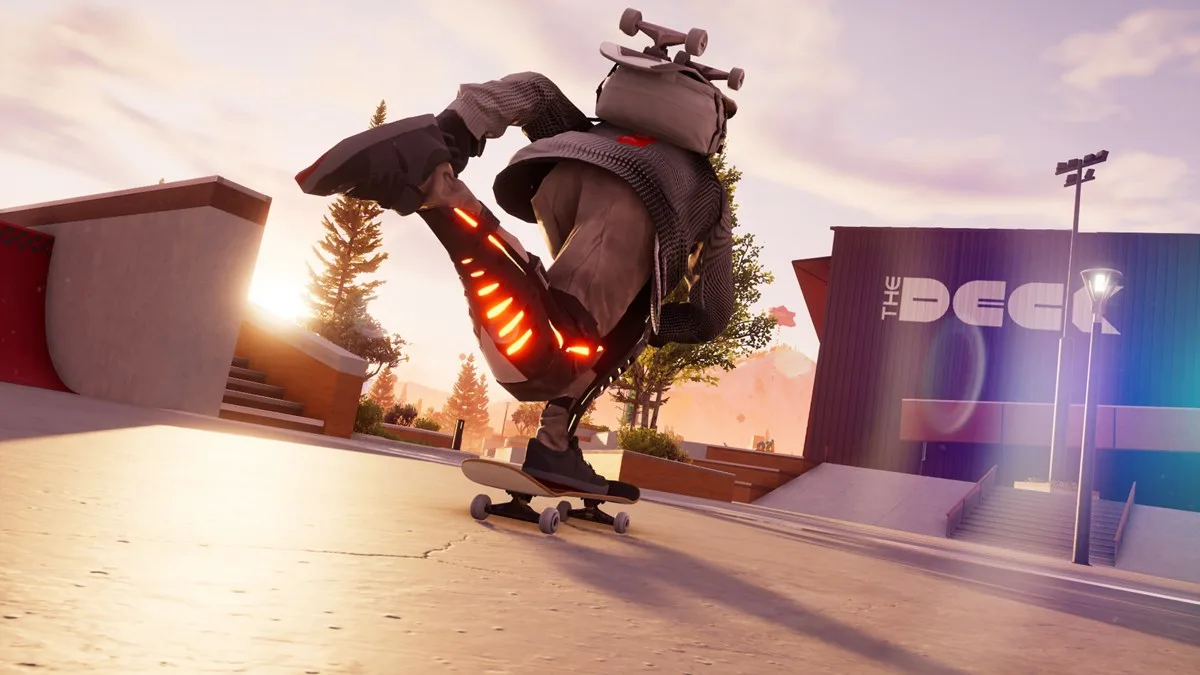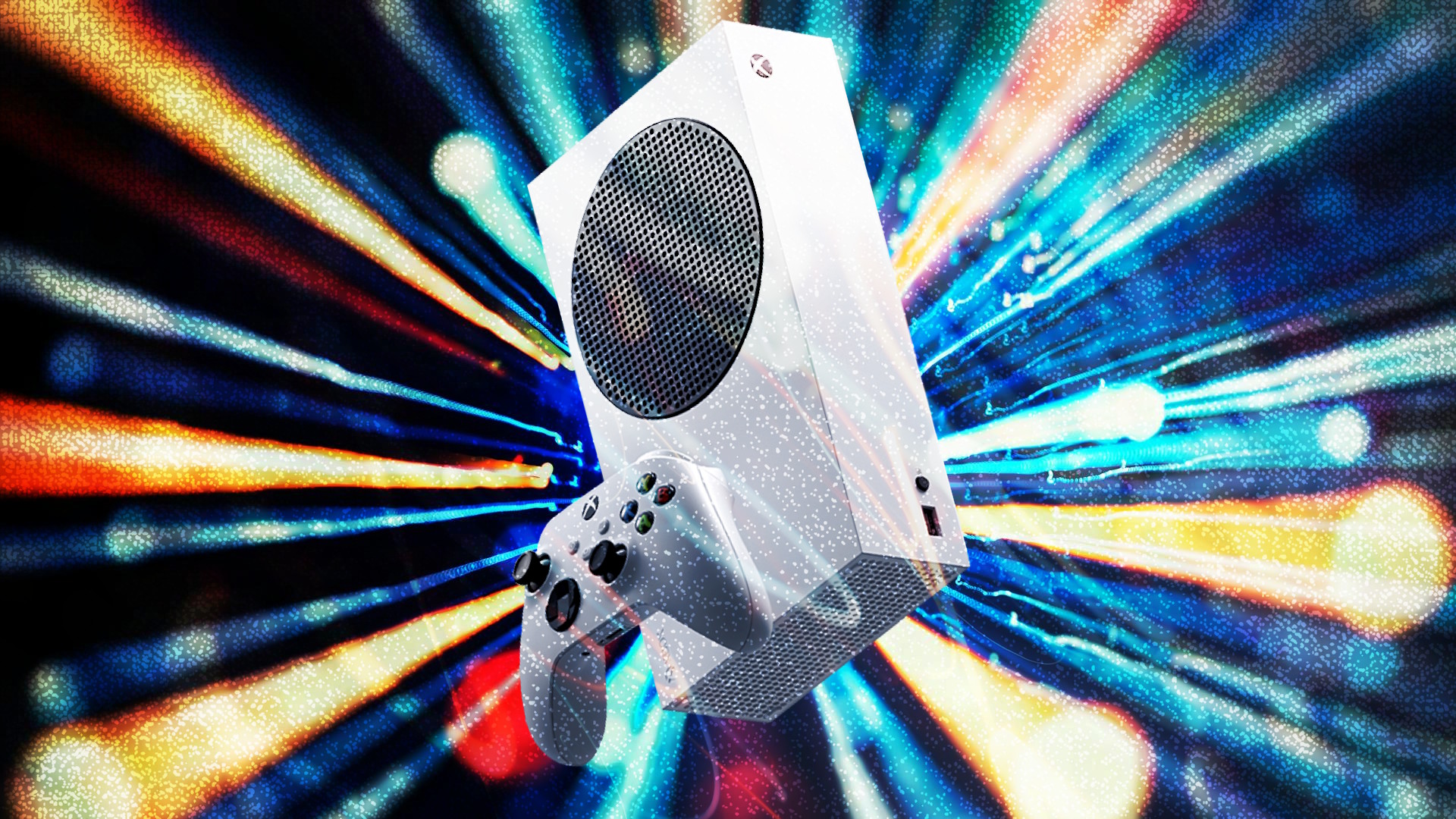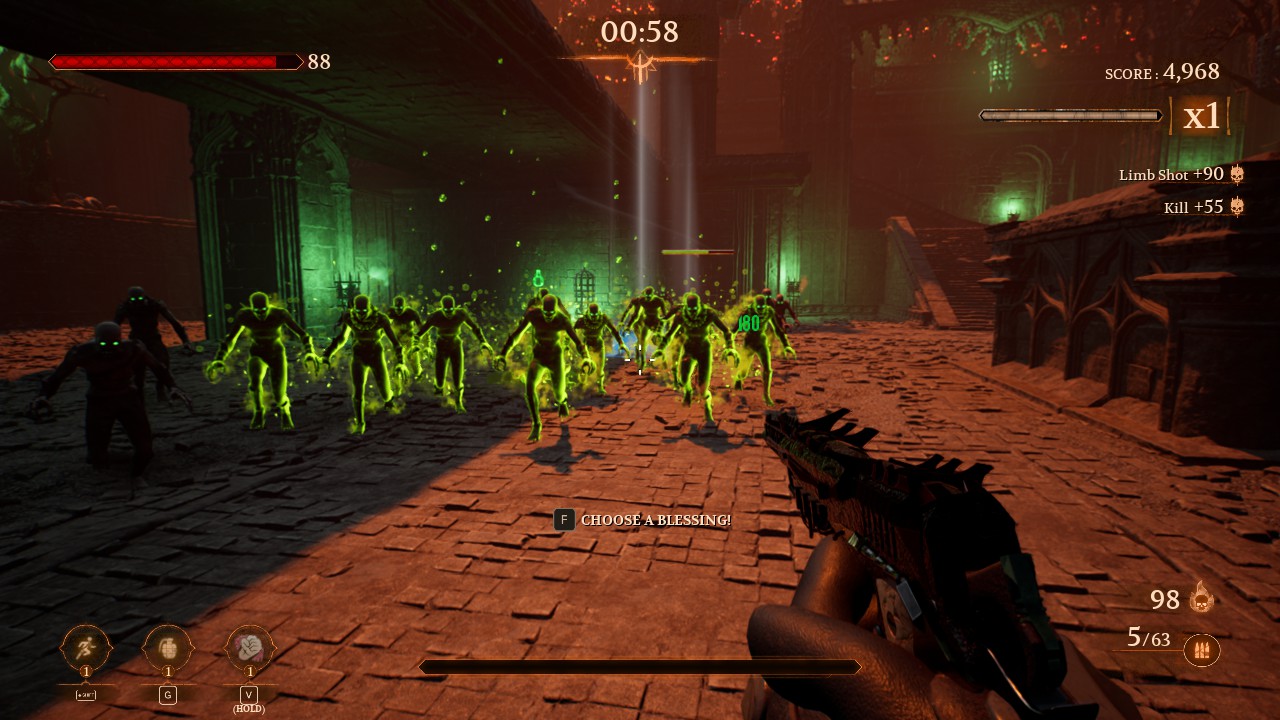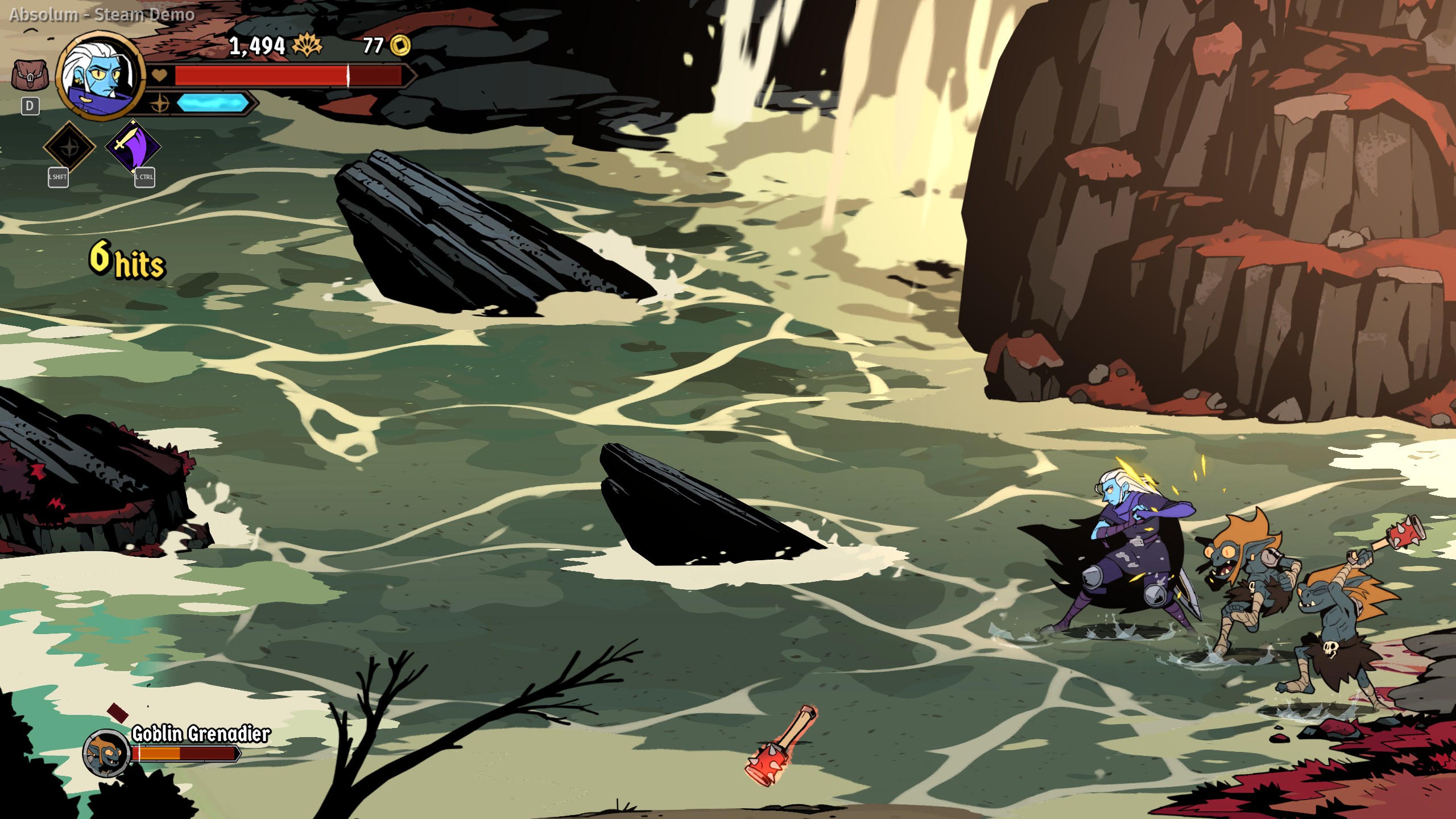Riders Republic stands almost alone as one of the few modern-day extreme sports games. A genre that used to flourish with attention from big-name studios from the mid-90s through to the 2010s, has now been condensed to just a few fleeting pops of life every so often.
That’s one of the big reasons why the newly-released Skate add-on for Riders Republic has been so anticipated by its community. After two years of the game providing a solid experience in a variety of other disciplines, the OG extreme sport to go absolute big-time is finally also part of the Republic. But, is it worth the relatively steep asking price?
Tech deck takeover
With 15 chapters of a career mode, and The Deck, a new skatepark built in the southern region of the map near Bryce Canyon (which is open to all) the new Season 8 update and Skate add-on bring a solid chunk of new content to Riders Republic.
The Deck is beautifully designed and its six visually distinct sectors each contain different elements that allow you to hone your skills in different ways.
For example, there’s The Main Plaza which features mostly flat terrain with a lot of benches and rails to grind on. Then there’s the Vans Skate Park which contains a mix of the former elements, along with some proper bowls to allow you to slide around like a bar of soap, pulling off jumps, grabs, and grinding on the edge of the pipe.
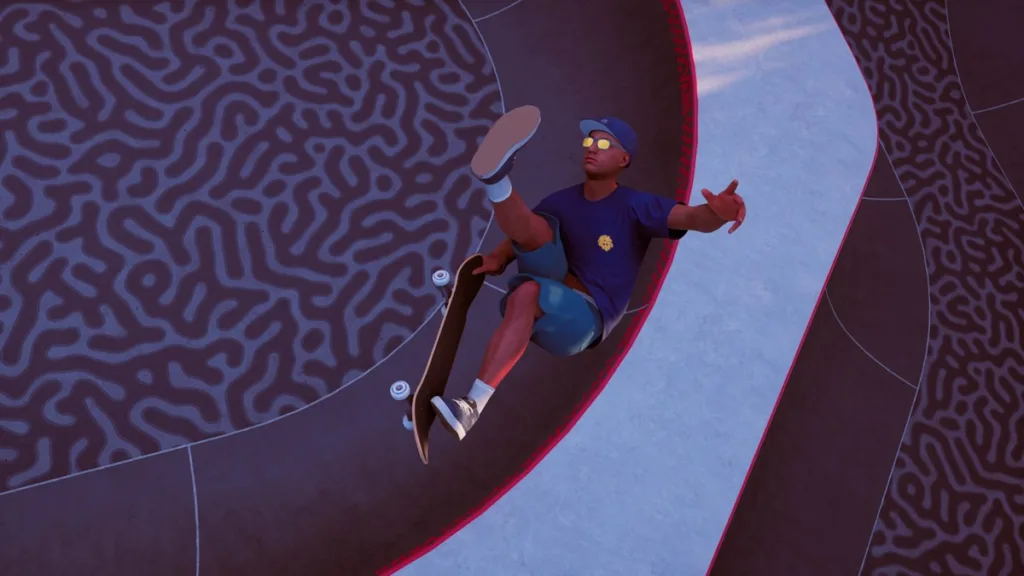
Each of the career chapters will take you around every section of The Deck, along with a brief visit to Area 52, and even the tranquil Ridge Ultimate skatepark over in Yosemite. All of these areas were previously used primarily for BMX events, so its great to get even more mileage out of them with skateboards.
No matter where you’re shreddin’, however, it’s all “in the technique”.
“Pretending I’m a superman”
Its trick system is one of Rider Republic’s tentpole features and with the new skate career, that’s all you’ll be doing. Even after you go through the initial full tutorials in the first handful of chapters of the skate career, you’ll basically get halfway through it before even the shorter tutorials have concluded. In other words, there’s a lot of different tricks and maneuvers to get a hold of over a long stretch of time.
Kickflip, ollie, misty, bluntslide, and the list goes on—there’s truly no shortage of tricks to master. If there’s any sport I’d recommend visiting the Trick Academy for, it’s this one. There’s a kiosk even conveniently placed towards the center of The Deck, showing that even the devs discreetly insist the objective of ‘practice makes perfect’.
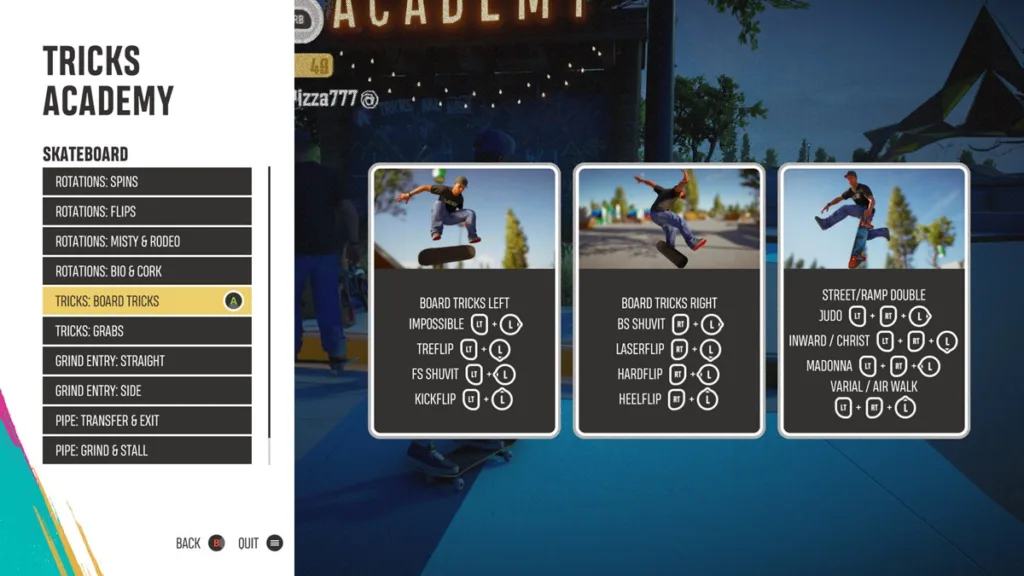
That said, just rolling around The Deck while Free Roaming will allow you to naturally hone your skills over time. Just as I felt when playing the preview version a few months ago, throwing on some chill beats while shredding has become my new favourite pastime in the Republic.
Some of the button combinations are a little uncomfortable to execute, but just as there’s been absolute masters of the Tony Hawk and EA Skate games, there will certainly be undisputed skateboard aficionados of Riders Republic.
With that in mind, I personally label this as the absolute hardest of Riders’ disciplines to master.
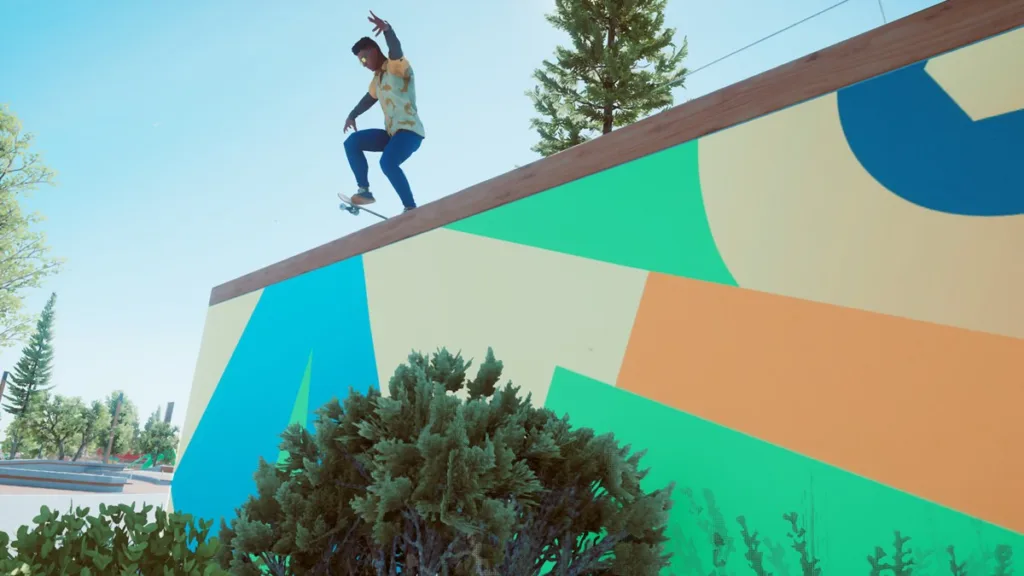
Wipeout aplenty
When you get a good trick combo going, it makes you feel like an absolute beast. However, I’ve lost count of the several times I’ve took a spill, even when pulling off a seemingly simple chain. This is not the fault of the game at all, it really is all a matter of ‘git gud.’
What also plays into this formula is that the skateboarding mechanics here really do seem to pump the needle more towards realism compared to the other disciplines in Riders Republic. While there’s still a degree of ‘game logic’ at play, you really do feel the weight of your rider more, along with the laws of physics applying more than ever.
For instance, executing a grind at higher speed will give you a satisfying slide, but if you encounter a steep incline, you absolutely will be slowed down and sent backwards. Compared to the way the BMX bikes handle this, for instance, the skateboards really do feel more natural.

While in a half-pipe, the energy gained by landing a solid trick will translate into your next push as you come off the ramp of the other side, resulting in bigger air time. Keep up the momentum and throw in some manuals as you land to keep the combo going, and you have yourself the recipe for a beautiful run.
It must be noted that the trick system has actually been overhauled in the Season 8 update for all disciplines. Now, you’ll be penalised for ‘spamming’ the same trick during a run, along with the new extra ‘B-O-N-U-S meter’ that gradually fills up as you keep a fresh combo going. The more letters you hit, the higher your added bonus points will be by the time the combo ends.
It’s not that the other disciplines in Riders Republic also don’t reward you for good technique like that, but the sensation of it seems amplified with the skateboards. That could just be me, but either way, it’s some beautiful work done by the dev team.
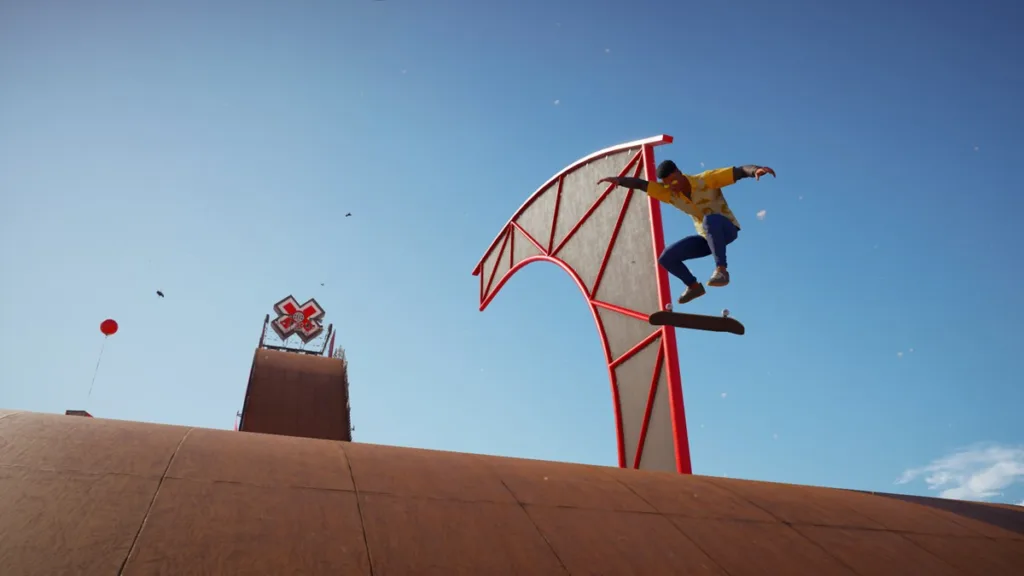
Considering that Riders Republic is already filled to the brim with different sports, the fact that none of them feel muddy or under-cooked is a remarkable achievement. In other words, the game continues to dodge the penalty of ‘biting off more than it can chew,’ which sometimes happens with some other multi-faceted titles.
Switch stance
Having praised the skateboarding mechanics extensively thus far, I do want to note how it does feel a little different than that of its closest rivals: Tony Hawk Pro Skater and EA’s Skate. The former is known to have a more ‘arcadey’ feel than the latter, therefore leaving Riders Republic to fall somewhere in the middle.
There’s only so many ways that skateboarding mechanics could be implemented, so calling this a copy-cat of either of the other series really doesn’t make much of a point. This feels good and works well, that’s really what matters.

While some of the more intricate and almost impossible manoeuvres such as the wall jumps and wall slides of Pro Skater aren’t present here, this is still the Republic, so you can pull off some monstrous jumps and roller coaster grinds in the right environments.
Really, the only notable exclusion of mechanics that stood out to me is the lack of handstands when coming up to the lip of a pipe. You can hang your board off the edge and hold it, even rotating it. However, that’s as far as those mechanics go. It’s not a huge omission, but it’s a key difference.
Where there is more semblance between this and Pro Skater is the fact that ‘S-K-A-T-E’ letters are hidden around each arena in the career, so have fun with that callback.
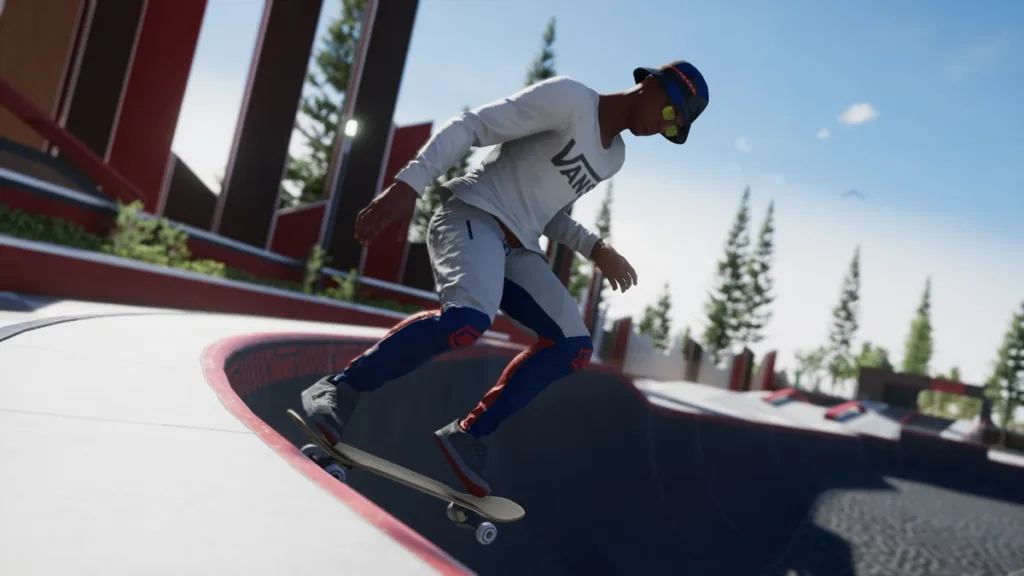
More in line with EA’s Skate, a new ‘Gear’ cam angle has been implemented, pulling the camera close to the floor and tightening the angle to focus on the board (similar to what’s seen in the cover image.) While this looks really cool most of the time, I found it to be a little wonky when in enclosed spaces like half-pipes, as it greatly reduces the FOV. Therefore, I found myself swapping between this angle and the default, Pro Skater-like third-person view quite often.
Now’s also a good time to mention the arrival of a proper Replay Mode that’s been added into the core game. Most of the screenshots in this piece were made possible due to its inclusion.
It’s relatively easy to use and will be of great benefit to the game’s community virtual photographers and filmmakers alike, especially since certain poses and angles when boarding last for mere moments. That said, you still can’t capture anything when in an event, only when free roaming; a bummer, to say the least.
Wrapping up the session
I’ve certainly had fun with the new Skate add-on for Riders Republic. The Deck is already one of my favourite spots on the map, the mechanics are fluid and fun, and it’s beneficial to have a truly dynamically different way of playing the game. That said, I’ve been saving my biggest gripe for last—this is a relatively tiny package.
At the onset of this piece, I mentioned how there are 15 chapters to the new career mode. That’s a little less than some of the other sports in the game, so it only took me just over an hour to have ploughed through them all.
The longevity comes from a variety of small secondary tasks. Like usual, there are three side objectives in each chapter, including finding the S-K-A-T-E letters and pulling off a specific series of tricks. There are also four special stunts around The Deck that call for racking up a specifically large score in just one shot; it’s harder than it sounds.

Finally, there are the two new skate-oriented sponsors that dish out three daily tasks. You keep doing them and gradually level them up, getting a reward upon every three tasks completed until their levels are maxed out.
This grind-centric way to add longevity to the discipline is true throughout the rest of the game. However, it’s just a little disappointing for the skate career, considering it’s been such a long time coming and at an extra cost for all players.
Ubisoft has completely switched up the SKUs for Riders Republic following the release of this add-on, seemingly in an effort to push newcomers into buying into the fresh content. New players have to pay at least $20 USD for the base game bundled with the add-on. Returning players can get it from the in-game store for the same price, albeit with the caveat of exchanging real money for the premium Republic Coins currency.
This brings up the whole cost-to-hours of content ratio that comes up a lot in gaming discussion these days. $20 for an add-on to an existing game is already a lot, but when you consider it’s for roughly one-hour of a new career mode, that’s when it becomes a tough ask. To put it into perspective, Tony Hawk Pro Skater 1+2 cost $39.99 (without a sale) and that’s a combined remake of two entire games.
There is the avenue of subscribing to Ubisoft+ to access the new Skate add-on and lots more, both in Riders Republic and a wealth of other games, but that’s a monthly bill.
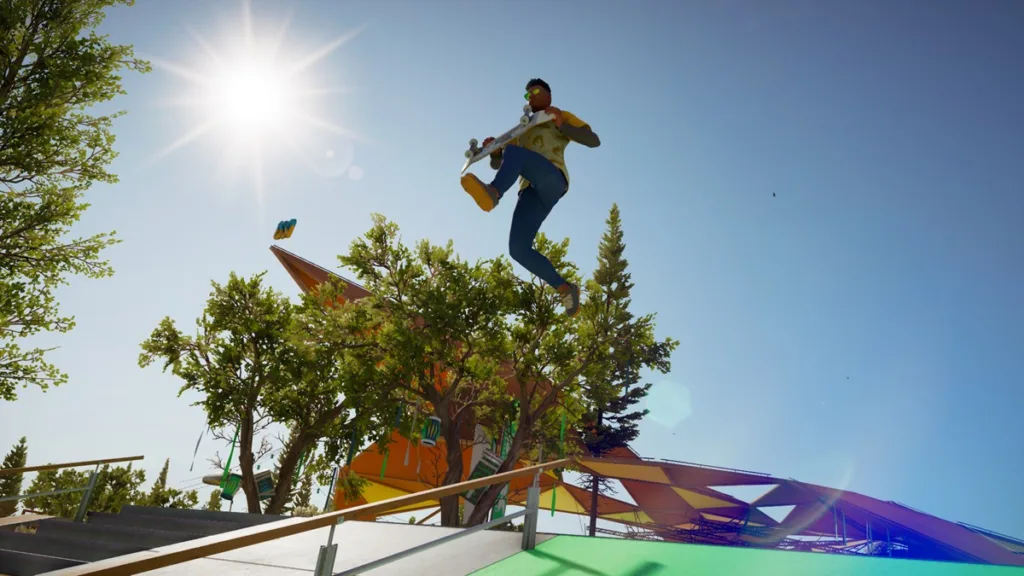
All things considered, this is a great add-on, and the dev team have done a beautiful job making it smoothly slide into the already large wheel of disciplines that Riders Republic has to offer.
On its own, however, its short length may make some hesitate to take the plunge. Here’s hoping the game’s focus on live events will squeeze more fun, genuine use out of what is otherwise a solid experience.

